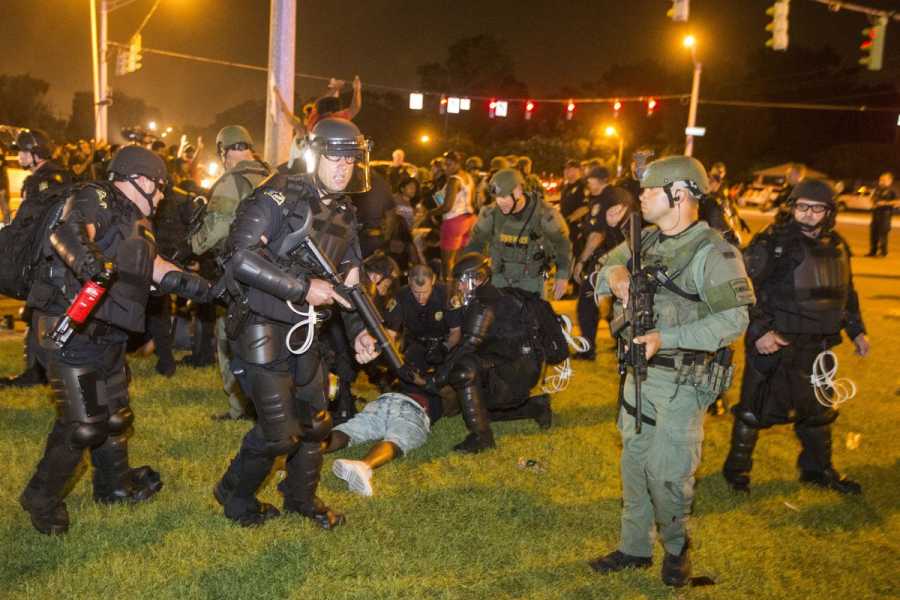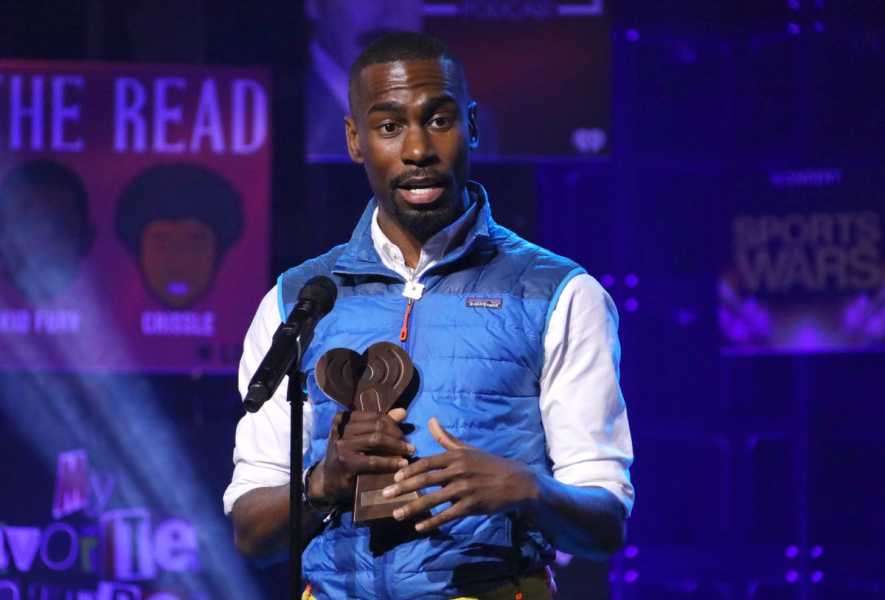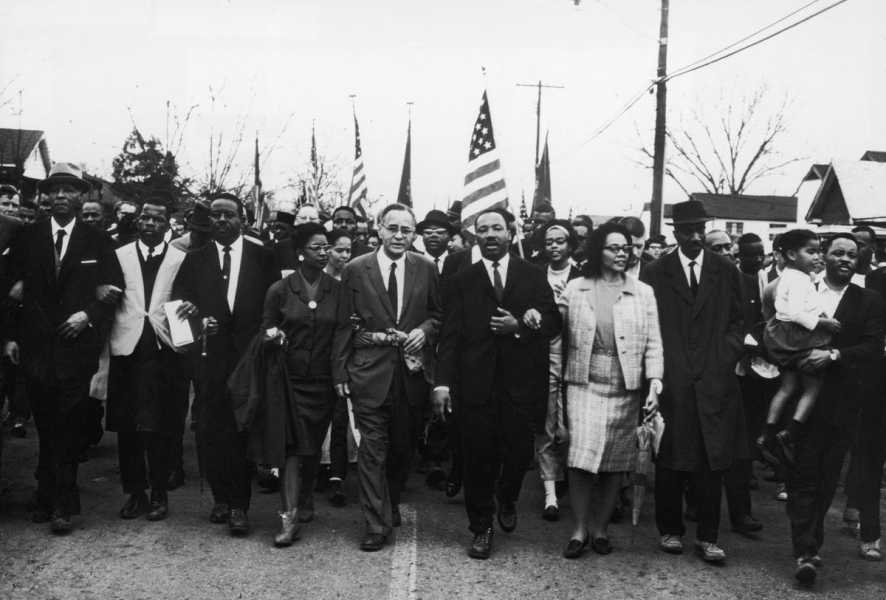The Fifth Circuit has spent years harassing a civil rights activist, and they gutted much of the First Amendment in the process.

Baton Rouge police rush a crowd of protesters and start making arrests on July 9, 2016, in Baton Rouge, Louisiana. Photo by Mark Wallheiser/Getty Images Ian Millhiser is a senior correspondent at Vox, where he focuses on the Supreme Court, the Constitution, and the decline of liberal democracy in the United States. He received a JD from Duke University and is the author of two books on the Supreme Court.
A renegade federal appeals court — one dominated by MAGA-aligned judges who routinely read the law in ways that even the current, very conservative Supreme Court finds untenable — has spent the last half-decade harassing DeRay Mckesson, a prominent civil rights activist and an organizer within the Black Lives Matter movement
As part of this crusade, two of the Fifth Circuit’s judges effectively eliminated the First Amendment right to organize a protest in a case known as Doe v. Mckesson.
Mckesson’s case has already been up to the Supreme Court once, and the justices strongly hinted in a 2020 opinion that the Fifth Circuit’s attacks on Mckesson’s First Amendment rights should end — labeling this case “fraught with implications for First Amendment rights.” But the Fifth Circuit did not take the hint, issuing a new opinion last July reaffirming its attack on First Amendment-protected political protests.
Now the case is before the Supreme Court again, and Mckesson’s lawyers want the justices to restore the First Amendment as fast as they possibly can.

Civil rights activist DeRay Mckesson accepts the Best Political Podcast award for Pod Save the People onstage during the 2020 iHeartRadio Podcast Awards at iHeartRadio Theater on January 17, 2020, in Burbank, California. JC Olivera/Getty Images
In 2016, Mckesson helped organize a protest near Baton Rouge’s police department building, following the fatal police shooting of Alton Sterling in that same Louisiana city. At some point during that protest, an unknown individual threw a rock or some other hard object at a police officer, identified in court documents by the pseudonym “Officer John Doe.”
Sadly, the object hit Doe and allegedly caused “injuries to his teeth, jaw, brain, and head, along with other compensable losses.”
There is no excuse for throwing a rock at another human being, and whoever did so should be held responsible for their illegal act, including serious criminal charges. But even Judge Jennifer Elrod, the author of the Fifth Circuit’s most recent opinion targeting Mckesson, admits that “it is clear that Mckesson did not throw the heavy object that injured Doe.”
Nevertheless, Doe sued Mckesson, claiming that, as the organizer of the protest where this injury occurred, Mckesson should be liable for the illegal action of an unidentified protest attendee. But that is simply not how the First Amendment works. The Supreme Court held in NAACP v. Claiborne Hardware (1982) that “civil liability may not be imposed merely because an individual belonged to a group, some members of which committed acts of violence.”
It should be obvious why protest leaders must not be held legally responsible for the actions of random protest attendees. No one will ever organize a political protest if they know that they could face financially devastating liability if a reckless or violent individual happens to show up.
Indeed, as Judge Don Willett, a Fifth Circuit judge who dissented from Elrod’s opinion, pointed out, Elrod’s approach could potentially force protest organizers to pay for “the unlawful acts of counter-protesters and agitators” who show up for the very purpose of undermining the protest organizer’s political goals. Under Elrod’s opinion, Mckesson could be held liable if the unknown rock-thrower turns out to be a member of the Ku Klux Klan who showed up for the very purpose of undermining the Black Lives Matter movement by associating them with violence.
In their petition to the Supreme Court, Mckesson’s attorneys make an audacious ask claiming that Elrod’s “decision is so ‘flatly contrary to this Court’s controlling precedent’ to be appropriate for summary reversal.”
A “summary reversal” is the judicial equivalent of a spanking. It means that the lower court’s decision was so erroneous that the justices decided to skip a full briefing or an oral argument in a case, and issue a permanent order overturning that lower court’s decision.
This process is rarely used, and it is distinct from the temporary orders the Court frequently hands down on its so-called shadow docket. The Supreme Court typically requires six justices to agree before summarily reversing another court’s decision.
Nevertheless, such a spanking is warranted in this case. Elrod’s opinion flouts exceedingly well-established First Amendment law. And it does so in a way that would make organized mass protests impossible, because anyone who tried to organize one would risk bankruptcy.
The Fifth Circuit’s Mckesson decision openly defies the First Amendment and the Supreme Court
To understand just how ridiculous Elrod’s decision is, and how egregiously she defies the Supreme Court’s caselaw, it’s helpful to start with the facts of the Claiborne case.
Like Mckesson, Claiborne involved a civil rights activist who organized a protest that allegedly included some violent individuals. In 1966, Charles Evers was the field secretary of the Mississippi chapter of the NAACP. In that role, he was the principal organizer of a boycott against white merchants in Claiborne County.
The Mississippi Supreme Court claimed that some of the individuals who joined this boycott also “engaged in acts of physical force and violence against the persons and property of certain customers and prospective customers” of these white businesses. Evers, meanwhile, allegedly did far more to encourage violence than DeRay Mckesson is accused of in his case. He allegedly gave a speech to potential customers at these stores, where he said that “if we catch any of you going in any of them racist stores, we’re gonna break your damn neck.”
The Supreme Court nonetheless held that this “emotionally charged rhetoric … did not transcend the bounds of protected speech.” Claiborne also warned that courts must show “extreme care” before imposing liability on a political figure of any kind.
That said, the Court’s decision also listed three limited circumstances when a protest leader may be held liable for the violent actions of a protest participant:
There are three separate theories that might justify holding Evers liable for the unlawful conduct of others. First, a finding that he authorized, directed, or ratified specific tortious activity would justify holding him responsible for the consequences of that activity. Second, a finding that his public speeches were likely to incite lawless action could justify holding him liable for unlawful conduct that in fact followed within a reasonable period. Third, the speeches might be taken as evidence that Evers gave other specific instructions to carry out violent acts or threats.
None of these circumstances are present Mckesson. To the contrary, the Fifth Circuit admitted in an earlier decision in this very case that Officer Doe “has not pled facts that would allow a jury to conclude that Mckesson colluded with the unknown assailant to attack Officer Doe, knew of the attack and ratified it, or agreed with other named persons that attacking the police was one of the goals of the demonstration.”
So how on earth did Elrod arrive at the conclusion that Mckesson could be held liable for the actions of an unknown protest attendee? For starters, she claimed that her court could just add new items to the list of three circumstances that could justify such liability in her Mckesson opinion. According to Elrod, “nothing in Claiborne suggests that the three theories identified above are the only proper bases for imposing tort liability on a protest leader.”
This is, to put it mildly, a very unusual way to read a Supreme Court opinion that held that threats to break someone’s neck can be First Amendment-protected speech, which calls for “extreme care” before targeting protest organizers, and which laid out only three very specific circumstances that “might justify” an exception. Elrod cites no other court decision that has ever read Claiborne in such a counterintuitive way.
Then, after giving herself the power to invent new exceptions to the First Amendment, Elrod writes that this amendment does not apply “where a defendant creates unreasonably dangerous conditions, and where his creation of those conditions causes a plaintiff to sustain injuries.”
And what are the “dangerous conditions” created by Mckesson? Mckesson “organized the protest to begin in front of the police station, obstructing access to the building.” He did not “dissuade” protesters who allegedly stole water bottles from a grocery store. And he “led the assembled protest onto a public highway, in violation of Louisiana criminal law.”
Seriously, she said that the First Amendment begins to fade the minute a protest occupies a street.

Dr. Martin Luther King Jr. and Coretta Scott King lead marchers in “unreasonably dangerous activity,” according to Jennifer Elrod. William Lovelace/Getty Images
It’s hard to imagine a more lawless, unpersuasive, and historically ignorant decision than the one Elrod put her name on in the Mckesson case. And if the Supreme Court can’t find the votes to reverse that decision, the right to engage in mass protest will become meaningless.
Sourse: vox.com